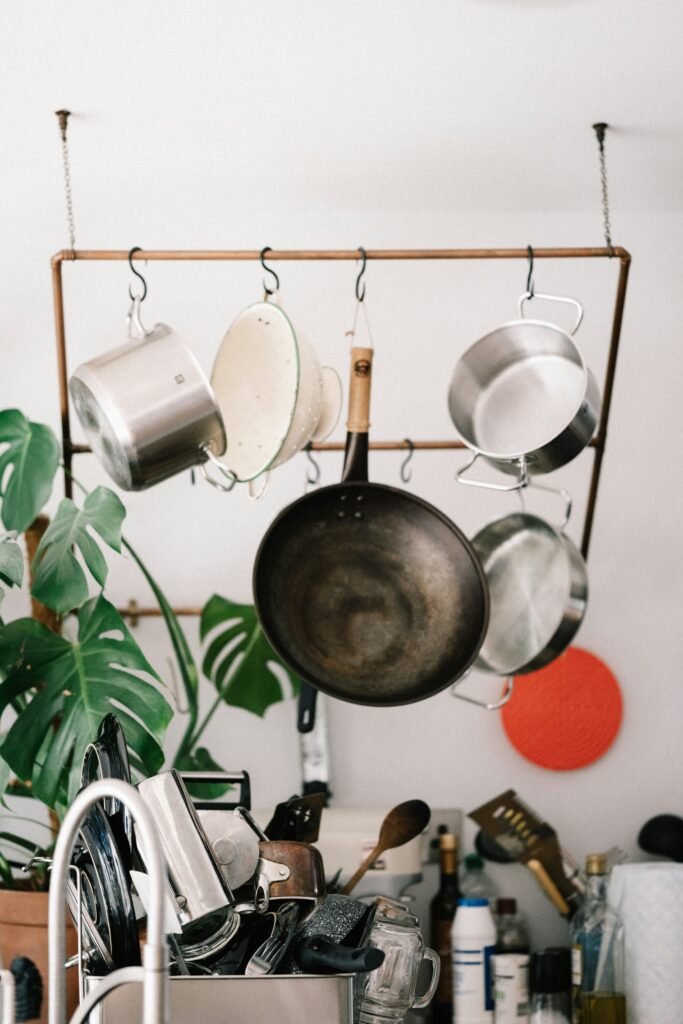In this article, you will discover the secrets to mastering proper cleaning techniques for plastic containers. We all use plastic containers in our daily lives, whether it’s for storing leftovers, packing lunch, or organizing our belongings. However, knowing how to effectively clean these containers is essential to maintain their quality and prevent any potential health risks. From choosing the right cleaning products to removing stubborn stains, this article will provide you with practical tips and tricks to ensure your plastic containers are sparkling clean and ready to use for years to come. So, let’s dive in and unlock the secrets to achieving cleanliness and longevity for your plastic containers!

This image is property of images.unsplash.com.
Understanding Plastic Containers
Plastic containers are versatile, practical, and commonly used for various purposes in our everyday lives. From food storage to sports water bottles, these containers provide convenience and help keep our belongings organized. However, it is important to understand the different types of plastic containers, their common uses, and the significance of cleaning them regularly.
Types of Plastic Containers
Plastic containers come in different types, each with its own properties and characteristics. The most common types include polyethylene terephthalate (PETE or PET), high-density polyethylene (HDPE), polyvinyl chloride (PVC), low-density polyethylene (LDPE), polypropylene (PP), and polystyrene (PS). Understanding the type of plastic used in a container is crucial, as it determines its recyclability, durability, and resistance to heat and chemicals.
Common Uses of Plastic Containers
Plastic containers find utility in various aspects of our lives. Food storage containers are widely used for storing leftovers, meal prepping, and organizing pantry items. Sports water bottles keep us hydrated during workouts or outdoor activities. Additionally, plastic containers like baby bottles play a vital role in childcare and feeding infants. These containers have become an integral part of our daily routines, making it essential to clean them properly.
Importance of Cleaning Plastic Containers
Regularly cleaning plastic containers is crucial for maintaining hygiene and ensuring the longevity of the containers. Without proper cleaning, leftover food, liquids, and bacteria can accumulate, leading to foul odors, stains, and even mold growth. Cleaning also helps remove any potential contaminants, ensuring the safety of the contents stored in the containers. By understanding the cleaning methods and techniques, you can effectively maintain the cleanliness and functionality of your plastic containers.
Preparing for Cleaning
Before diving into the cleaning process, it is important to take a few preparatory steps to ensure efficiency and effectiveness.
Gather Necessary Cleaning Supplies
To clean plastic containers thoroughly, gather the necessary cleaning supplies beforehand. You will need dish soap, scrub brushes or sponges, baking soda, white vinegar, lemon juice, bleach (if required), and a clean towel or dish rack for drying. Having these supplies at hand will make the cleaning process smoother and more convenient.
Ensure Proper Ventilation
Cleaning plastic containers often involves the use of cleaning agents that can emit strong odors or potentially harmful fumes. Therefore, it is important to clean the containers in a well-ventilated area. Open windows and doors, or turn on an exhaust fan, to ensure fresh air circulation and prevent the buildup of any unpleasant odors.
Remove Any Leftover Food or Liquids
Before cleaning the plastic containers, make sure to remove any leftover food or liquids. This can be done by simply pouring out any remaining contents and scraping off any residue with a spoon or spatula. Taking this step will make the cleaning process more effective and prevent the spread of any unwanted bacteria or odors.

This image is property of images.unsplash.com.
Basic Cleaning Methods
Once you have prepared the necessary supplies and removed any leftover food or liquids, you are ready to start cleaning your plastic containers. There are various methods to choose from, depending on your preference and the type of container being cleaned.
Handwashing Plastic Containers
Handwashing is a straightforward and effective method for cleaning plastic containers. Start by filling a sink or basin with warm water and add a small amount of dish soap. Place the containers in the soapy water and use a scrub brush or sponge to gently scrub away any grime or stains. Pay special attention to the corners and crevices of the containers. Rinse the containers thoroughly with clean water and let them air dry or towel dry before storing them.
Using a Dishwasher
If your plastic containers are dishwasher-safe, using a dishwasher can be a convenient option for cleaning. Place the containers on the top rack of the dishwasher, ensuring they are secure and won’t tip over. Add dish detergent to the dishwasher dispenser and select a suitable wash cycle. Avoid using high heat settings, as this can cause deformation or damage to the plastic. Once the cycle is complete, let the containers air dry or towel dry before storing them.
Choosing the Right Cleaning Products
When choosing cleaning products for plastic containers, it is important to consider their compatibility with the specific type of plastic. Mild dish soaps are generally safe for most plastic containers. However, avoid using harsh chemical cleaners or abrasive scrubbers, as they can cause damage or leave scratches on the plastic surface. Opt for gentle cleaning solutions like baking soda, vinegar, or lemon juice, which will be discussed further in the subsequent sections.
Cleaning Specific Types of Plastic Containers
Different types of plastic containers may require slightly different cleaning techniques due to their specific characteristics. Let’s explore the cleaning methods for some common types of plastic containers.
Cleaning Sports Water Bottles
Sports water bottles are often used for carrying water or beverages during physical activities. To clean them, start by removing the lid and separating any detachable components, such as straws or mouthpieces. Handwash these components separately using warm soapy water and a brush or sponge. For the bottle itself, use a long-handled brush or bottle brush to reach the bottom. Rinse everything thoroughly and let them air dry completely before reassembling.
Cleaning Food Storage Containers
Food storage containers are a staple in every kitchen, but they can also be prone to stains and odors. To clean them, start by soaking the containers in warm soapy water for a few minutes. Use a sponge or soft-bristle brush to scrub away any residue or stains. For tougher stains, create a paste using baking soda and water and apply it to the affected areas. Let the paste sit for a few minutes before scrubbing it off. Rinse the containers thoroughly and dry them completely before putting them away.
Cleaning Baby Bottles
Keeping baby bottles clean is crucial for the health and safety of your little one. Start by disassembling the bottle and separating the nipple, collar, and other parts. Soak everything in warm soapy water, using a bottle brush or nipple brush to clean the inside and outside of the bottle as well as the nipple. Pay attention to any milk residue or mold that may be present. Rinse everything thoroughly and sterilize the bottle and parts according to the manufacturer’s instructions. Allow everything to air dry on a clean towel before reassembling and storing.

This image is property of images.unsplash.com.
Removing Tough Stains and Odors
Sometimes, plastic containers may develop tough stains or lingering odors that regular cleaning methods may not completely eliminate. In such cases, a few additional techniques can help tackle these stubborn issues.
Using Baking Soda and Vinegar
Baking soda and vinegar are natural cleaners that can be highly effective in removing tough stains from plastic containers. Create a paste by mixing baking soda with water and apply it to the stained areas. Let it sit for a few minutes before scrubbing with a sponge or brush. If the stain persists, pour a small amount of white vinegar into the container and let it sit for a few hours. Rinse thoroughly and repeat the process if necessary. The combination of baking soda and vinegar works wonders in removing stains and eliminating odors.
Lemon Juice for Removing Odors
Lemon juice is known for its natural deodorizing properties. If your plastic containers have unpleasant odors, squeeze fresh lemon juice into them and let it sit for a few hours. The acidity of the lemon juice helps neutralize odors, leaving your containers smelling fresh and clean. Afterward, rinse the containers thoroughly with water and allow them to air dry completely.
Using Bleach for Disinfection
In situations where disinfection is necessary, such as with baby bottles or containers used for raw meats, bleach can be an effective option. Dilute bleach with water according to the manufacturer’s instructions and soak the containers for a few minutes. Be cautious when handling bleach, as it can be harmful if not used properly. After soaking, thoroughly rinse the containers with water and ensure they are completely dry before using or storing them.
Avoiding Common Mistakes
While cleaning plastic containers, it is important to avoid certain common mistakes that can cause damage or compromise their safety.
Avoid Using Abrasive Scrubbers
Using abrasive scrubbers, such as steel wool or harsh scouring pads, can cause scratches and damage the surface of plastic containers. These scratches can harbor bacteria and make it more difficult to clean the containers effectively. Instead, opt for gentle brushes, sponges, or soft-bristle scrubbers to protect the integrity of your plastic containers.
Don’t Microwave Plastic Containers
Microwaving plastic containers that are not specifically labeled as microwave-safe can result in the release of harmful chemicals into your food or beverages. Heat can cause the plastic to melt or warp, contaminating your food. Always check the container’s label or use microwave-safe glass or ceramic containers when heating food in the microwave.
Skip Using Harsh Chemical Cleaners
Harsh chemical cleaners, such as bleach or ammonia-based products, can damage the plastic and leave behind residue that may be harmful when in contact with food or beverages. Opt for milder and safer cleaning solutions, like dish soap, baking soda, vinegar, or lemon juice, to ensure the safety of your plastic containers.
Drying and Storing Plastic Containers
Proper drying and storage of plastic containers are essential for maintaining their cleanliness and preventing the growth of mold or mildew.
Air-Drying Plastic Containers
After cleaning and rinsing the plastic containers, it is important to let them air dry completely. Place them upside down on a clean dish rack or a towel-lined countertop to allow air circulation and promote thorough drying. Ensure that the containers are completely dry before stacking or storing them to prevent the buildup of moisture or mold.
Using Dish Racks or Towel Drying
If you prefer faster drying or have limited countertop space, you can use a dish rack. Place the washed plastic containers, upside down, on the rack to allow proper airflow between and around the containers. Alternatively, you can use a clean kitchen towel to dry the containers manually. Gently pat them dry, paying attention to the corners and crevices, before storing them.
Proper Storage Methods
Choosing the right storage method plays a key role in maintaining the cleanliness and organization of plastic containers. Stack the containers neatly, ensuring that they are completely dry to avoid trapping any moisture. Consider using lids or covers to keep the containers dust-free when not in use. If possible, store similar-sized containers together, or use organizing bins or drawer dividers to keep them easily accessible and prevent clutter.
Regular Maintenance and Inspection
Regularly inspecting and maintaining your plastic containers helps ensure their longevity and the safety of the contents stored within.
Regularly Inspect for Cracks or Damage
Inspect your plastic containers regularly for any cracks, damage, or signs of wear and tear. While plastic containers are durable, they can become weakened over time, especially if exposed to high heat or rigorous use. Cracks or damages can compromise the integrity of the container, making it less effective for storage purposes. Replace any containers that show signs of damage to prevent the risk of leakage or contamination.
Check for Molding or Mildew
Mold or mildew can develop on plastic containers if they are not properly cleaned or dried before storage. Regularly check for any signs of mold or mildew, especially in hard-to-reach areas or container lids. If you notice any growth, thoroughly clean the affected containers using appropriate cleaning methods and ensure they are completely dry before using or storing them.
Replace Containers When Needed
Over time, plastic containers may become discolored, warped, or develop an unpleasant odor that cannot be eliminated through cleaning. When containers reach this point, it is advisable to replace them. Using compromised or deteriorated containers can pose risks to the safety and freshness of the contents. Maintain a regular inventory of your plastic containers and replace any that are no longer suitable for use.
Additional Tips and Tricks
Here are a few additional tips and tricks to help you master the art of cleaning plastic containers effectively:
Using a Toothbrush for Hard-to-Reach Areas
For hard-to-reach areas or tight corners in plastic containers, repurpose an old toothbrush. The small bristles and compact size of the toothbrush can effectively scrub away residue or stains in these challenging spots. Simply apply some soapy water or cleaning solution to the toothbrush and carefully scrub the difficult areas to achieve a thorough clean.
Preventing Staining with Cooking Spray
To prevent staining in plastic containers, especially when storing tomato-based sauces or other highly pigmented foods, spray a thin layer of cooking spray on the inside of the container before filling it. This creates a barrier that helps prevent the food from sticking to the plastic surface and reduces the chances of stubborn stains.
Using Lemon Peel to Remove Odors
If your plastic containers have absorbed strong odors, such as from garlic or onions, a simple trick with lemon peel can help eliminate the smell. Rub the inside of the container with a lemon peel and leave it for a few hours. The natural citrus oils in the lemon peel will help neutralize the odor, leaving your containers smelling fresh and ready to use again.
Conclusion
Properly cleaning plastic containers is essential for maintaining hygiene, ensuring the longevity of the containers, and safeguarding the safety of the contents stored within. By understanding the types of plastic containers, their common uses, and the importance of regular cleaning, you can develop a cleaning routine that keeps your plastic containers looking and functioning their best. Remember to gather the necessary cleaning supplies, choose the appropriate cleaning method, and follow recommended techniques for specific types of plastic containers. Regularly inspect, maintain, and replace containers when needed, and consider implementing additional tips and tricks for effective cleaning. By mastering these proper cleaning techniques, you can enjoy the convenience and practicality that plastic containers offer in your daily life while ensuring a clean and safe storage solution.
